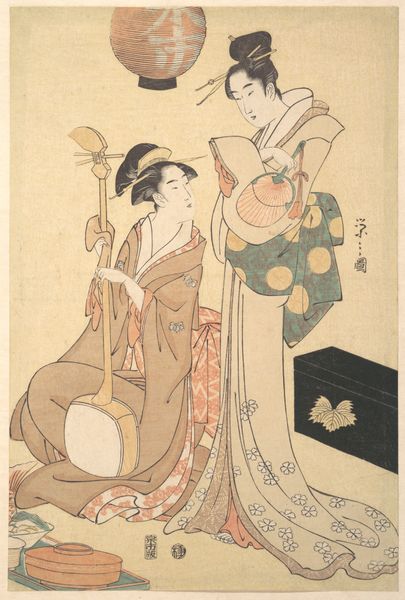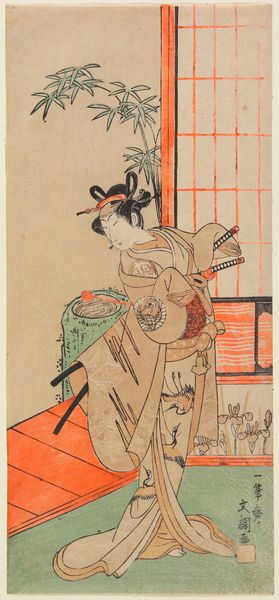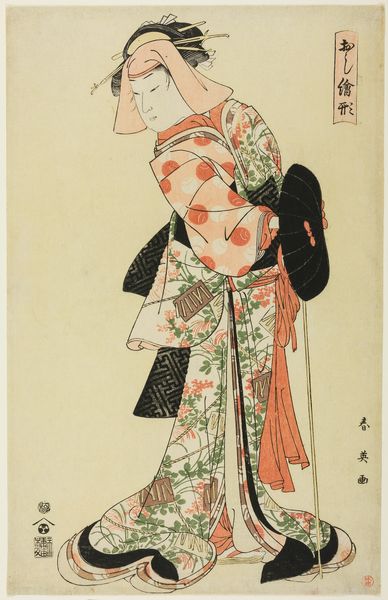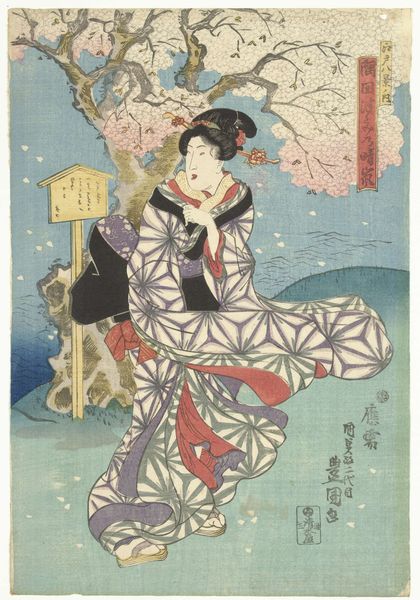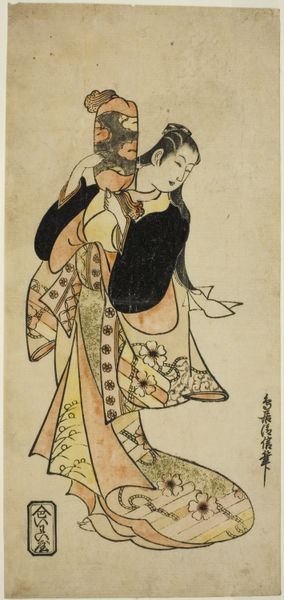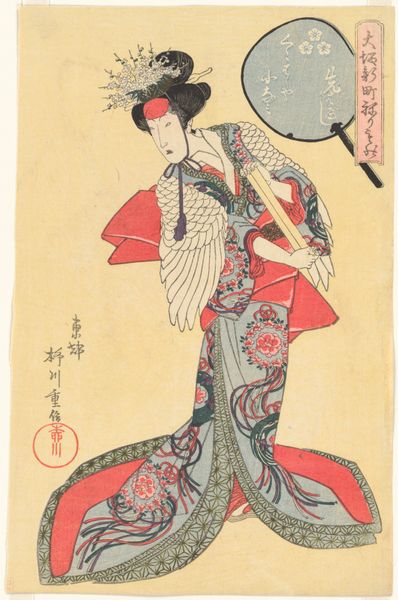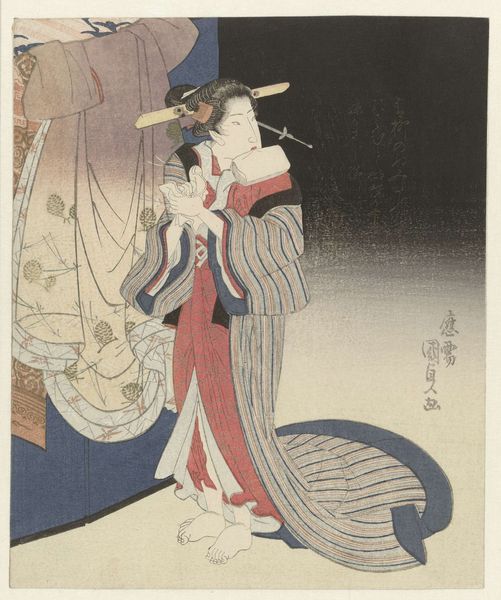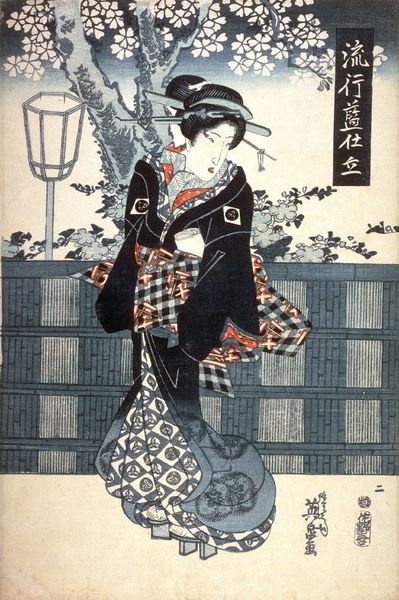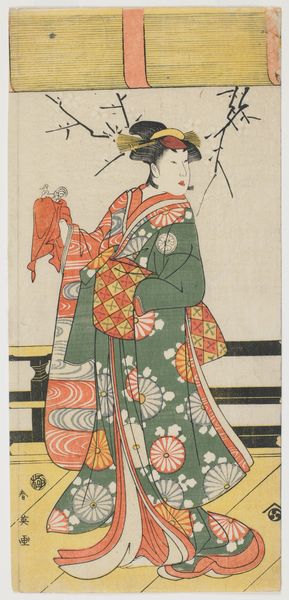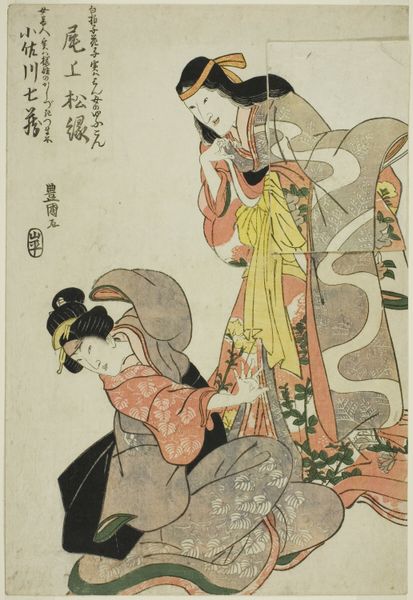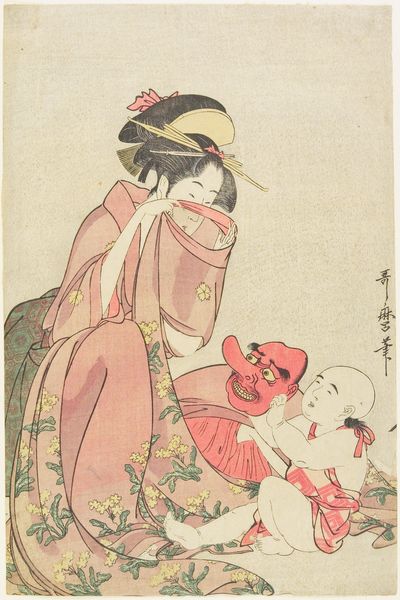
print, paper, ink
#
portrait
# print
#
asian-art
#
ukiyo-e
#
japan
#
figuration
#
paper
#
ink
Dimensions: 7 5/8 × 4 7/8 in. (19.3 × 12.4 cm) (image, sheet, koban)
Copyright: Public Domain
Curator: Immediately, I'm drawn to the stark simplicity and tenderness radiating from this image. Editor: This is Utagawa Kunisada’s "Woman Holding a Baby," a Japanese woodblock print dating to about 1823-1825, currently held in the Minneapolis Institute of Art. The work itself invites us to think about the societal expectations of women and their roles as mothers in 19th century Japan. Curator: The red cartouche is very striking and draws the eye to the calligraphy hovering above the woman’s head, as though it were some divine message or affirmation. Does the text give any clues to broader cultural significance? Editor: Absolutely. The text in the cartouche, often associated with Kunisada's beauty prints, essentially praises the woman's beauty. Consider the significance of depicting a woman as both beautiful and a mother—attributes often set in opposition even today. We see echoes of the Madonna and Child here, but transposed into a different cultural landscape with its own iconography. The woman’s composed expression belies the realities of childbirth, maternal expectations, or the class realities of raising a child during this era. Curator: Looking at her robes, I wonder about the symbolic meaning of the pattern, the cut, and the colors used. Even the way the garment drapes tells us something about societal presentation and even constraint. What might an examination of traditional patterns bring to our understanding? Editor: The patterns can suggest status, affiliation, even seasonal connotations. I'd suggest they serve as emblems within a shared cultural language that resonates with certain viewers, though others outside of the culture might miss these clues. She wears multiple layers, signifying affluence. Also, note that her pale skin adheres to conventionalized notions of female beauty during this period. In tandem, these all are visual clues about identity. Curator: In a way, she's both idealized and ordinary. Editor: Yes, and thinking about this work, it allows us to meditate on broader themes surrounding motherhood, representation, and the lives of women then and now. It speaks to an intimate connection, but one shaped by societal constraints. Curator: This piece really underscores how an image can hold layers of meaning, depending on what questions we bring to it. Editor: It’s fascinating how it transcends cultures yet remains deeply rooted in its own time and place.
Comments
No comments
Be the first to comment and join the conversation on the ultimate creative platform.
